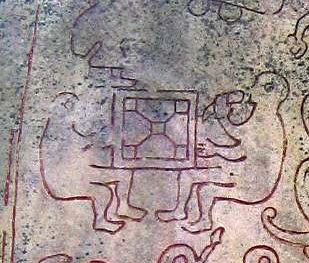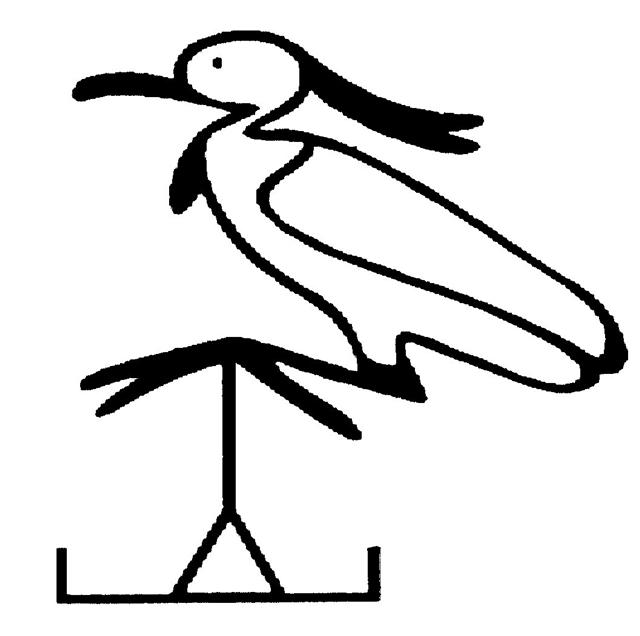|
4. The black sheep with a white central spot, al jauza, can be contrasted with the Golden Fleece, in which case the latter probably stands for Sun and the former for Moon. The colour white corresponds to Moon and the colour of gold corresponds to Sun. Black is the colour of the inside of the square of Orion and a white 'string of pearls' adorns the center. Black is the colour of night: ... In this ceremony two diviners and their wives sit on benches so that they occupy the corner positions of the cosmic square. They take their seats in the same order as the stones were placed, with the men on the eastern side and the women on the west. The ritual actions of sitting down and lifting upward are done with great precision and care, because they are directly related to the actions done by the gods at Creation. The people represent the gods of the four corners and the clouds that cover the earth. As they rise from their seats, they metaphorically lift the sky. If their lifting motion is uneven, the rains will be irregular and harmful ... When the rains arrive it is no longer necessary to help the 4 gods in the corners to lift up the cloud blanket which covers the earth - the implication being there is now a distance between the clouds and the earth. Rain indicates there must be a distance between the earth and the clouds. The Raingod has arrived and he is Sun, he has been born anew. The square of Orion is like a dark cloth of night covering earth, like when Uranus covered Earth. In the morning this cloth is lifted up and a new little Sun is revealed. A little thought reveals he is probably responsible, he has with his hot rays dried up the wet earth. The resulting mist is lifting upwards. It can therefore later be returned in the form of rain. Instead of a single white spot (Moon) the whole earth is now bathing in the golden rays from Sun. The board of tafl, as illustrated (turned vertical in order to show the layout) on the Ockelbo Runestone in Sweden, has 4 squares connected with a central 5th - it is a variant of the 'quincunx' emblem:
5 means 'fire' (Sun) and the central 'corner' (perhaps imagined as uplifted like the vertex of a pyramid) is the place of the King piece. "The term tafl ... is the original name of the game. However, Hnefatafl became the preferred term for the game in Scandinavia by the end of the Viking Age, to distinguish it from other board-games, such as Skáktafl (Chess), Kvatrutafl (Tables) and Halatafl (Fox games), as these became known. The specific name Hnefatafl possibly arose as meaning 'board-game of the fist', from hnefi ('fist') + tafl, where 'fist' referred to the central king-piece." (Wikipedia) When the Sun King occupies the 5th central corner dawn has arrived. But at some later point in time he is bound to disappear: "Although the size of the board and the number of pieces varied, all games involved a distinctive 2:1 ratio of pieces, with the lesser side having a king-piece which started in the centre. The king's objective was to escape to (variously) the board's periphery or corners, while the greater force's objective was to capture him." (Wikipedia)
In this example we can see 12 white pieces surrounding the King and 4 * 6 = 24 black pieces threatening him. The ratio 2:1 implies for instance 240 + 120 = 360 days, and it also has been used in the text of G. By adding the central king piece it becomes 365. The meaning of the 'fist' (the king piece) is 5 (no fingers have yet been released): ... The practice of turning down the fingers, contrary to our practice, deserves notice, as perhaps explaining why sometimes savages are reported to be unable to count above four. The European holds up one finger, which he counts, the native counts those that are down and says 'four'. Two fingers held up, the native counting those that are down, calls 'three'; and so on until the white man, holding up five fingers, gives the native none turned down to count. The native is nonplussed, and the enquirer reports that savages can not count above four ... The top of the Egyptian pyramids were golden (Sun) while the rest of the outer cover was white limestone (Moon): "True pyramids (at least the larger ones), as opposed to step pyramids in Egypt were topped by a special stone called a pyramidion, or sometimes a capstone, which was itself a miniature pyramid. It brought the pyramid structure to a point at the same angle and the same proportions as the main body. Actually, the ancient Egyptian word for the pyramidion, which could also sit atop the apex of an obelisk, was ben-benet, named for the sacred ben-ben stone kept in the temple of Heliopolis, the oldest center of the sun cult in Egypt. During the Old Kingdom, they were usually made of diorite, granite or a very fine limestone which was then covered in gold or electrum. By the Middle Kingdom and the end of the Pyramid Age, they were usually made of granite and inscribed with texts and symbols." (http://www.touregypt.net/ featurestories/pyramidions.htm) We should remember the bennu bird, first mentioned at Alrisha in connection with the Phoenix constellation and later at Baten Kaitos where it was compared to manu tara:
The feet of this bennu bird seem to illustrate the 4 lines joined at the top of a pyramidion. One of these lines is though its leg. |


